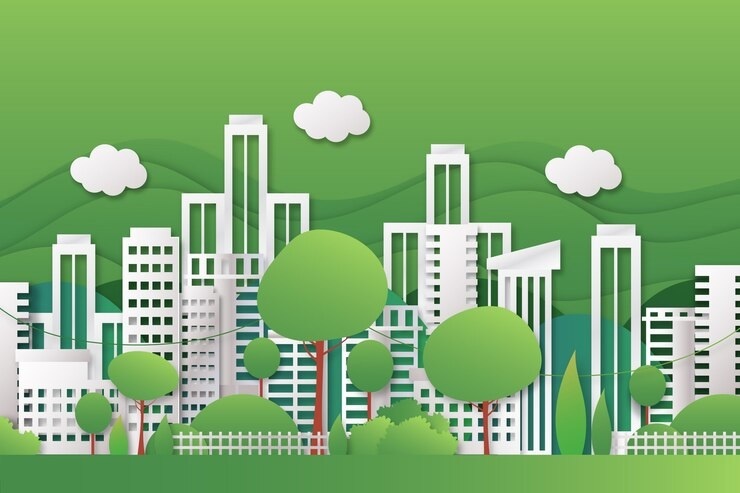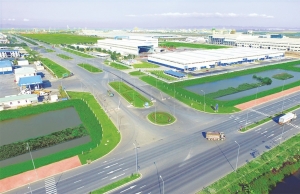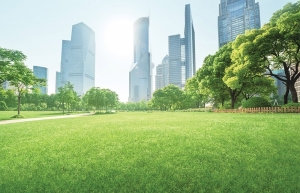Vietnam intent on realising green building aspirations
At a conference on realising green social housing held in Ho Chi Minh City last week, developers reported that building social housing faces many difficulties because social housing requires low prices. Many more fees would be applied for green criteria, and therefore fewer people will be able to afford such housing.
 |
| Vietnam intent on realising green building aspirations, illustration photo/ Source: freepik.com |
However, CEO of Fico Tay Ninh Cement JSC Nguyen Cong Bao said that developers can choose green materials and design to meet the green criteria without expenses increase.
“It is not difficult for project investors to find green construction products and materials at competitive prices, without increasing costs here in Vietnam,” Bao said.
For example, concrete has 25-30 per cent recycled content from blast furnace slag or fly ash, while steel produced from blast furnace or electric arc technology uses recycled steel and reduces emissions.
“It’s the same price and the same quality, but we can choose a product where the consulting unit calculates fewer emissions, bringing more efficiency to the project,” Bao shared.
ARDOR Green’s CEO Vu Linh Quang added that there are actually countless green standards that investors can voluntarily choose.
“Each level of certification have different requirements. There will certainly be a certain cost increase, but it is small compared to the value the investor brings to residents. At the same time, it is possible to limit the increase thanks to the proactivity of businesses from the beginning in applying technical solutions such as design to construction, enhancing green areas and living space,” Quang said.
Quang also recommended that currently, EDGE standards are suitable for social housing in increasing energy, water, and material efficiency. An innovation of the International Finance Corporation, EDGE makes it easy to design and certify resource-efficient and zero-carbon buildings of every type, everywhere.
Sharing experiences from implemented projects, Tran Dang Toan, deputy general director of Project Development at Kim Oanh Group, said that the issue of input costs for simple social housing projects and green houses depend on legal planning and credit output for customers.
“The output credit factor is the most important. However, customers are currently having financial problems, with the preferential interest rate from the Bank for Social Policies recently increasing from 4.8 to 6.6 per cent,” Toan said.
Meanwhile, talking about unlocking capital sources for the social housing segment, deputy director of the State Bank of Vietnam in Ho Chi Minh City, Nguyen Duc Lenh, said that building social housing according to green standards is of special interest to the business community.
“At the same time, businesses and investors in social housing must also ensure green criteria to meet loan conditions,’ Lenh said.
The Housing Law elaborates on and provides guidelines for some articles and clauses on development and management of social houses specified in the previous housing law. Income conditions have been loosened, and couples with a total monthly income of no more than VND30 million ($1,200) will be able to buy social housing.
In addition, a credit package of around $5 billion was allocated for the social housing programme from the four state-owned commercial banks of Agribank, Vietcombank, BIDV, and VietinBank. Accordingly, the current loan interest rate applicable to home buyers is 6.5 per cent per year, and investors 7 per cent.
“The important aspect is to continue maintaining low loan interest rates and long loan terms, and speed up social housing construction to have more supply for people to buy houses,” Lenh said.
Through a comprehensive report since 2021 of 61 out of 63 localities, the whole country has fewer than 620 social housing projects implemented, with around 562,000 apartments.
Of those, around 80 projects have been completed so far, providing over 40,000 apartments. Nearly 130 other projects have started construction with a total of more than 110,000 apartments. The rest have been approved and are in the pipeline for construction.
 | Ready-built factories aim for official green certifications Many ready-built factory developers are on track to develop green buildings meeting international standards. |
 | Green building goals take gradual steps Buildings of a higher quality and with green certification are being more sought after by high-valued tenants. |
 | More green buildings in Vietnam need to be realised Vietnam needs to construct more green buildings to achieve its emission reduction goals, instead of focusing on winning green building recognition certificates. |
What the stars mean:
★ Poor ★ ★ Promising ★★★ Good ★★★★ Very good ★★★★★ Exceptional
Related Contents
Latest News
More News
- JustCo expands business into Vietnam (December 22, 2025 | 17:58)
- Sun Group breaks ground on $2 billion Van Don casino complex (December 19, 2025 | 18:14)
- Rare, beautiful, sustainable: the mark of iconic real estate (December 19, 2025 | 08:00)
- Owner-occupied housing stabilises, paving the way for new growth cycle (December 18, 2025 | 17:04)
- Unlocking urban potential of smart cities (December 18, 2025 | 16:50)
- Green finance offers 'passport' for Vietnamese construction, building materials firms (December 15, 2025 | 08:00)
- Gamuda Land commit long-term investment (December 12, 2025 | 11:49)
- HITC ties up with Evolution to develop AI and hyperscale data centres in Vietnam (December 11, 2025 | 12:09)
- Real estate deals boom via high-profile names (December 08, 2025 | 11:32)
- Industrial segment shaped by M&As (December 08, 2025 | 08:00)

 Tag:
Tag:




















 Mobile Version
Mobile Version